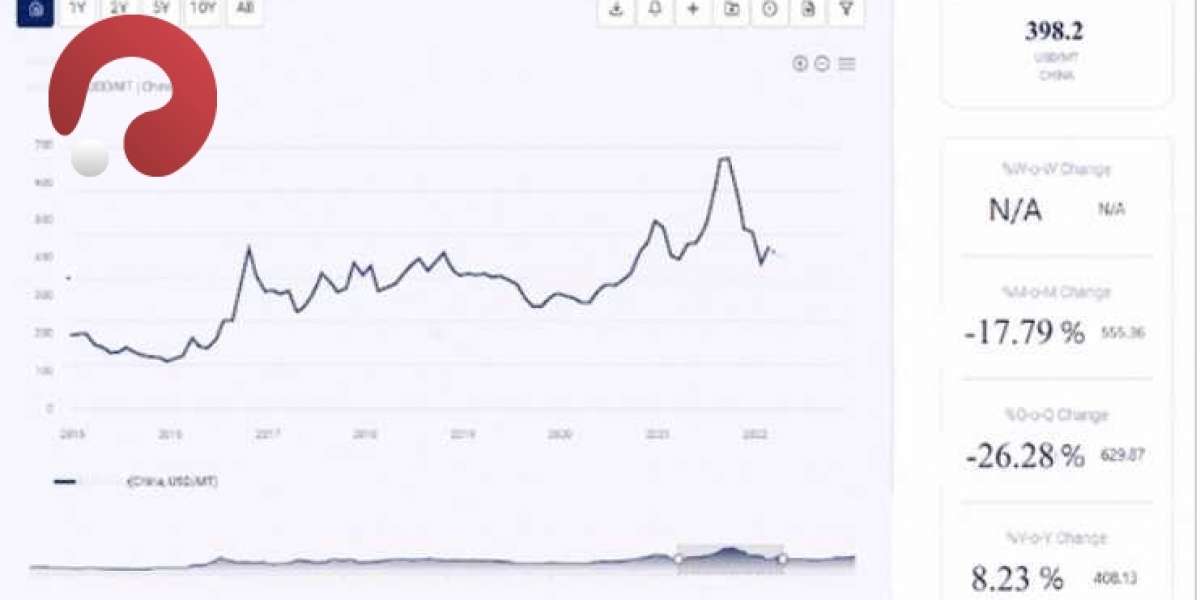Barium Sulfate Price Trend, a widely used chemical compound, experiences price fluctuations due to various market dynamics. This article aims to explore the trends shaping the Barium Sulfate Price Trend, key factors influencing price movements, and insights into future market prospects.
Understanding Barium Sulfate
Barium sulfate, also known as barite, is a white crystalline solid that occurs naturally as barite ore. It is widely utilized in various industries, including oil and gas, paints and coatings, pharmaceuticals, plastics, and electronics. Barium sulfate is valued for its high density, chemical inertness, brightness, and opacity, making it suitable for applications such as drilling fluids, radiopaque contrast agents, pigments, fillers, and coatings.
Request for Real-Time Barium Sulfate Prices: https://www.procurementresource.com/resource-center/barium-sulfate-price-trends/pricerequest
Factors Influencing Barium Sulfate Prices
- Demand from End-Use Industries: The demand for barium sulfate is influenced by its applications in diverse industries. Growth in sectors such as oil and gas exploration, paints and coatings manufacturing, healthcare, and construction drives demand for barium sulfate products. Changes in industrial production, infrastructure investments, and consumer preferences impact overall demand and prices.
- Supply-Side Factors: Barium sulfate production is primarily derived from mining and processing natural barite ore. Factors affecting the availability of barite reserves, mining regulations, geological exploration, and extraction technologies influence supply dynamics. Production disruptions, mine closures, and geopolitical risks in major producing regions can affect supply levels and prices.
- Raw Material Costs: Barium sulfate production costs are influenced by the prices of raw materials such as barite ore, chemicals used in processing, energy inputs, and transportation costs. Fluctuations in commodity markets, currency exchange rates, and geopolitical events impact the cost of raw materials, thereby affecting production costs and pricing strategies.
- Regulatory Compliance: Regulatory standards governing environmental protection, occupational health and safety, product quality, and waste management practices impact barium sulfate production processes and compliance costs. Stringent regulations related to mining operations, chemical handling, and emissions control influence operational efficiency and cost structures.
- Market Competition: Competitive dynamics among barium sulfate producers, suppliers, and distributors influence market pricing strategies, product differentiation, and customer relationships. Pricing pressure, market share dynamics, and competitive positioning impact profitability and pricing decisions in the barium sulfate market.
Trends in Barium Sulfate Prices
- Volatility in Raw Material Prices: Barium sulfate prices exhibit volatility in response to fluctuations in raw material costs, particularly barite ore prices. Supply-demand imbalances, geopolitical tensions, and changes in mining regulations in major producing countries contribute to price volatility in the barium sulfate market.
- Demand from Oil and Gas Sector: The oil and gas industry is a significant consumer of barium sulfate, primarily for drilling fluid applications. Fluctuations in oil prices, drilling activity, rig counts, and exploration investments influence demand for barium sulfate products in the oilfield services sector, impacting overall market dynamics.
- Growth in Paints and Coatings Sector: Barium sulfate is widely used as a pigment extender and functional filler in paints, coatings, and plastics applications. Growth in construction activities, automotive production, and industrial coatings drives demand for barium sulfate-based products, influencing market trends and pricing dynamics.
- Technological Advancements: Innovations in barium sulfate processing technologies, product formulations, and application methods enhance product performance, quality, and cost-effectiveness. Research and development efforts focused on improving particle size distribution, surface modification, and dispersion characteristics drive product innovation and market competitiveness.
- Sustainability Initiatives: Increasing emphasis on sustainability, environmental stewardship, and corporate social responsibility drives demand for eco-friendly alternatives and cleaner production processes in the barium sulfate industry. Adoption of sustainable mining practices, recycling initiatives, and eco-friendly product formulations align with market trends and regulatory requirements.
Future Outlook and Strategies
- Market Diversification: Exploring new applications, geographic markets, and customer segments diversifies revenue streams, reduces dependency on specific industries or regions, and mitigates market risks in the barium sulfate industry.
- Supply Chain Optimization: Strengthening supply chain resilience, optimizing logistics, and securing diverse sourcing options for raw materials enhance operational efficiency, reduce lead times, and ensure supply reliability in the barium sulfate market.
- Product Innovation: Investing in research and development to innovate new product formulations, improve product performance, and develop value-added solutions cater to evolving customer needs and market trends in the barium sulfate industry.
- Regulatory Compliance: Proactively monitoring and complying with evolving regulatory standards, environmental regulations, and product safety requirements ensure market access, enhance brand reputation, and mitigate legal and compliance risks in the barium sulfate market.
- Collaborative Partnerships: Building strategic alliances, partnerships, and joint ventures with key stakeholders, including customers, suppliers, research institutions, and government agencies, fosters innovation, market expansion, and sustainable growth in the barium sulfate industry.
Conclusion
The barium sulfate market is influenced by a complex interplay of demand-supply dynamics, raw material prices, regulatory factors, and competitive forces. By understanding key market trends, monitoring price movements, and adopting strategic approaches to risk management, innovation, and market development, stakeholders can navigate market uncertainties, capitalize on emerging opportunities, and achieve sustainable growth and profitability in the dynamic barium sulfate industry landscape.












